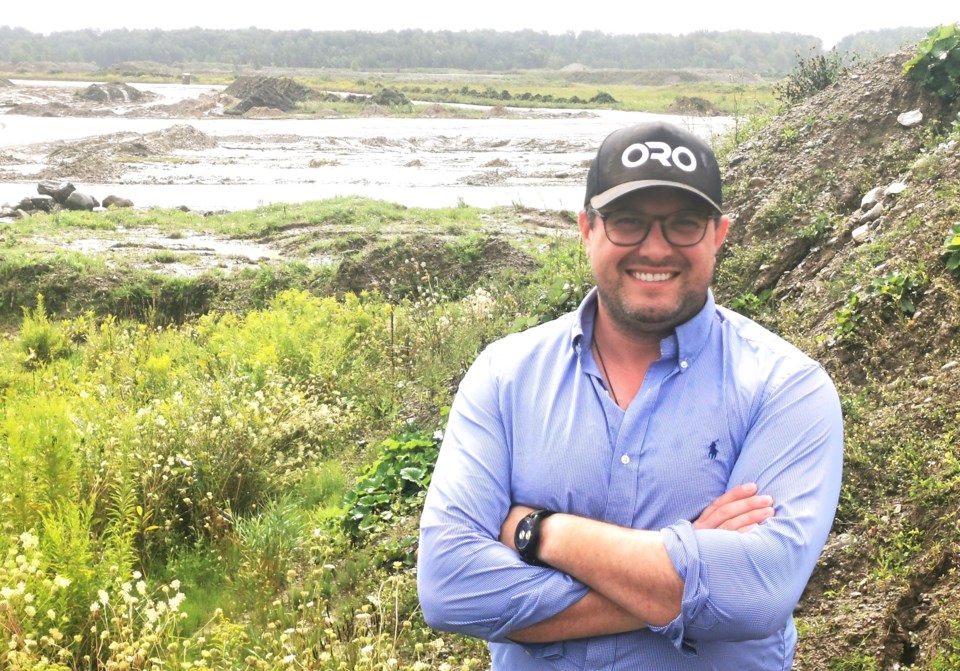Five years ago, when the owners of the Oro-Medonte Automotive Innovation Park (OMAIP) were granted a minister’s zoning order (MZO) to build a racetrack and related automotive facilities, they were confident they’d be open in 2023.
But then COVID happened in the spring of 2020, throwing all plans and projections into the wind.
At Oro-Medonte Township’s council meeting this week, the managing partner of the project, Geoffrey Campbell, provided an update on the project. He announced it should be open in 2026.
“These projects are quite big, especially when we're dealing with rural servicing where we’ve got to do a lot of the earth works and servicing up front,” Campbell said of the development, which is located directly across from the Lake Simcoe Regional Airport on Line 7, about halfway between Barrie and Orillia.
“They do take more time than anyone would like,” he added.
Granted an MZO in 2019, the project’s draft plan of subdivision was approved by the township in January 2021. That same year, the Lake Simcoe Regional Conservation Authority issued a permit for site works in June, and the Ministry of Environment, Conservation and Parks’ environmental compliance approval for the on-site sewage services was issued in November.
In May 2022, the Phase 1 site-plan approval was issued and the site-plan agreement was registered.
A month later, work on the site began.
Then things began to shift.
“In January of 2024, the draft plan of subdivision approval that was issued in January 2021 lapsed,” said Brad Rogers, a partner with Groundswell Urban Planners, a company retained by Campbell in June. “In February of this year, right to today, the applications for construction of the model barn have been submitted.”
Last month, Groundswell submitted an application to township staff to reinstate the draft plan of subdivision approval.
“That application is currently under review,” Rogers added.
Rogers said the anticipated next steps in the process include approval of the model barn application, reinstatement of the lapsed draft plan of subdivision application and approval of the associated draft plan redline revision.
The revision maintains the plan’s four industrial blocks, but it revises the limits between blocks one and two so that the racetrack is separated and contained in its own block. The changes were made to facilitate separate construction, ownership and financing of the track, Rogers said.
Campbell said the project has made significant headway since his last update to council last December.
“Over the course of this past year, we’ve been working diligently on stripping the top soil on the north side of the site and compacting the engineered fill back into place, which makes the foundation of both the circuit as well as that first 21 barns (vehicle storage units) within the site-plan agreement area,” he said.
“We’ve made quite a bit of headway out there as it relates to moving earth. We literally took dark topsoil and stockpiled it and put lighter material back down so at the end it just still looks like dirt," Campbell added. “Sometimes it’s hard to see the progress."
Campbell said the earthworks will continue for another year to 18 months.
“By this coming spring, we’ll be moving to underground services, digging in stormwater pipes once the frost has left the ground, putting in our catch basin system and starting to backfill with gravel,” he said. “From there, we start to build up and come out of the ground.”
At that point, Campbell expects the excitement to ramp up.
He says he has 17 tenants who have already committed to the project.
“The majority of that list are groups that are actively engaged and eager to get in as soon as possible,” he said.
According to an economic impact analysis report that was prepared by urbanMetrics, a company that provides market intelligence for clients dealing with the planning, regulatory and municipal development process, the Oro-Medonte Automotive Innovation Park will have a significant impact on the local economy.
The urbanMetrics report claims building and infrastructure construction will require a one-time investment of about $534 million and will generate 4,958 full-time and part-time jobs — 83 per cent of them in Simcoe County.
According to Campbell, urbanMetics used the federal government’s projection plans for jobs based on expenditure growth and the number of buildings.
“That impact is not limited to directly on the site,” Campbell said. “When they forecast 4,900 jobs, that is regionally, so as result of the construction, you end up with additional people who are required. For example, diesel mechanic’s shop who is servicing the bulldozers, or you have more people in the restaurants in the region. So that's a total impact in the region during the construction due to the activity.
“The numbers themselves are modelled and set by the federal government,” Campbell said.



